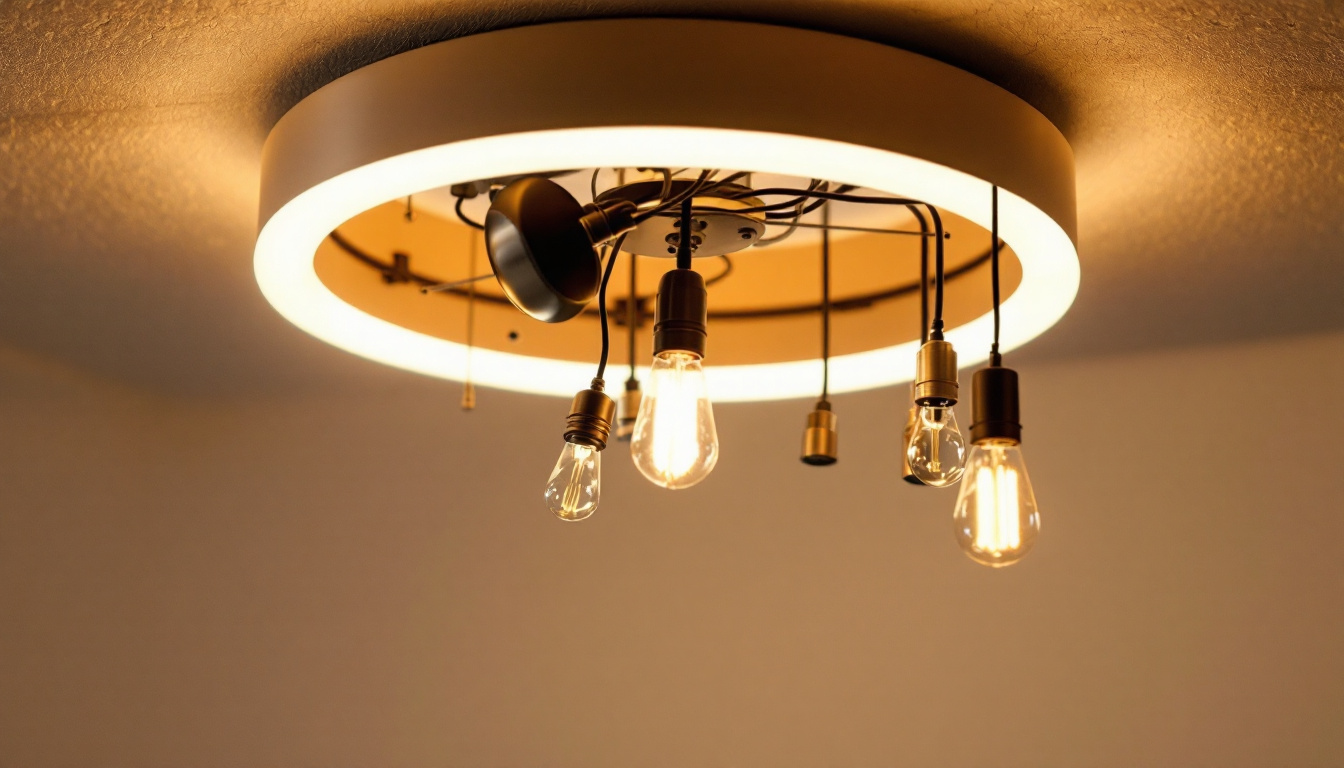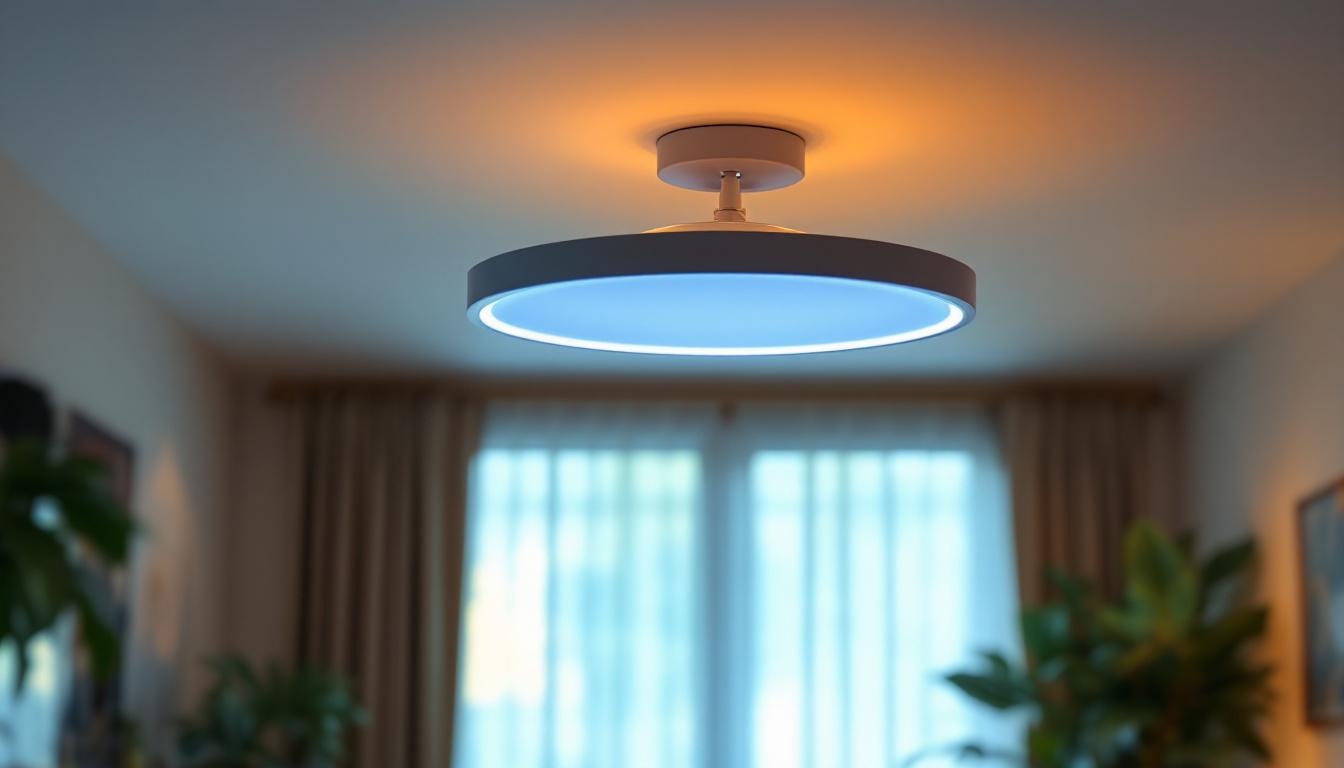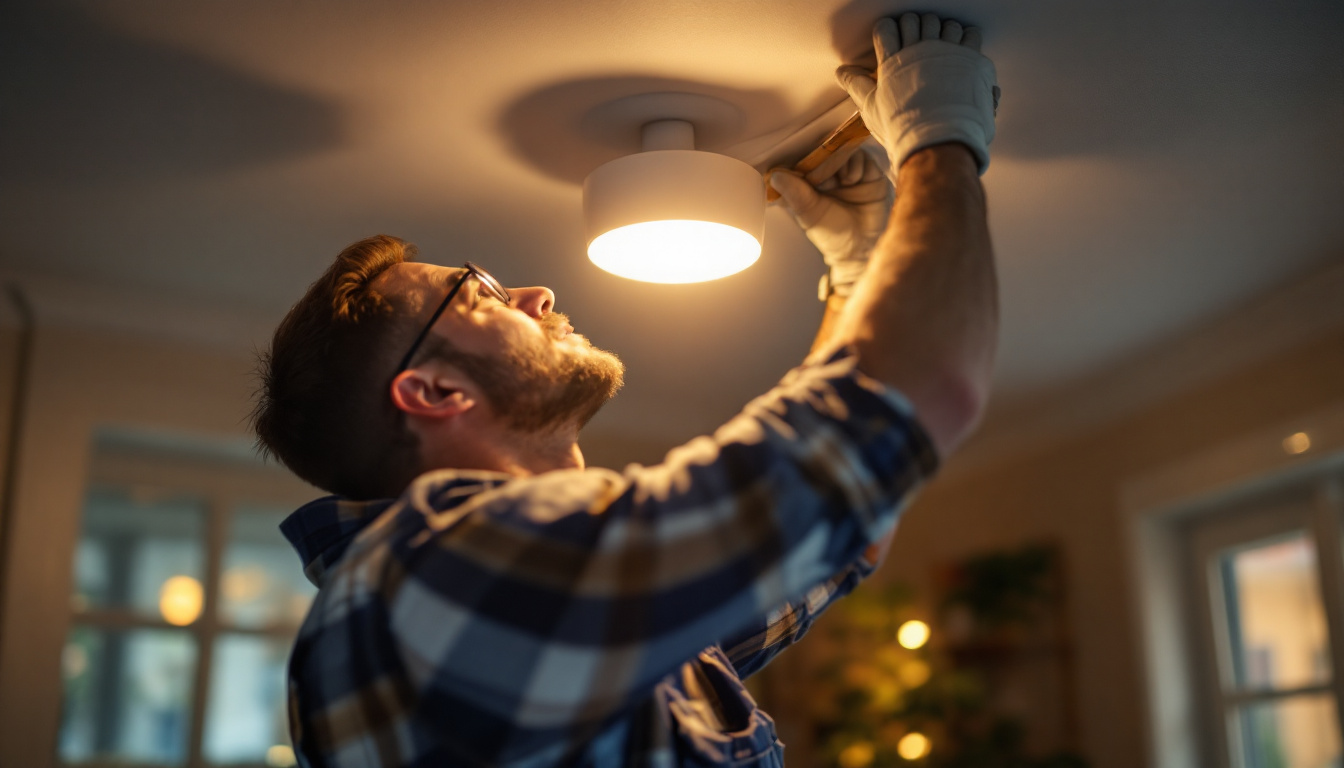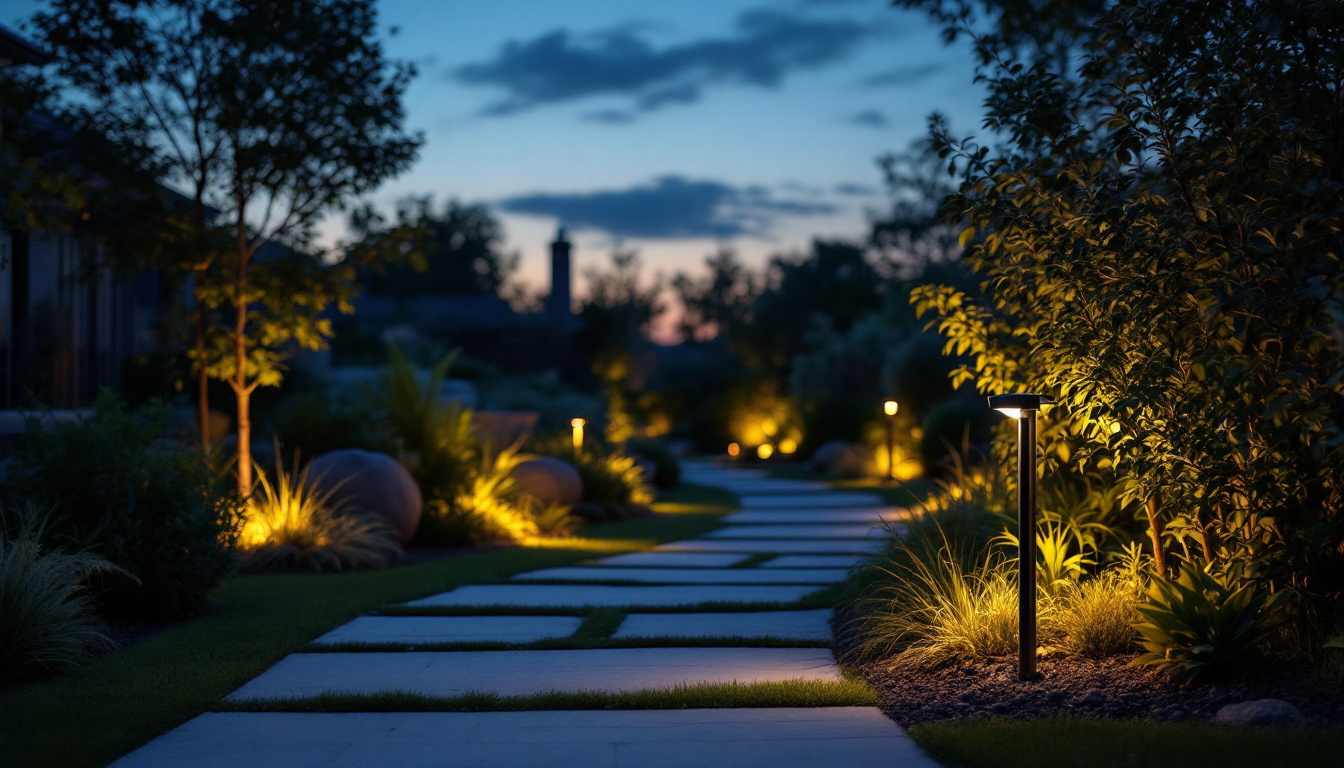
The lighting industry has undergone a remarkable transformation over the years, particularly in the realm of ceiling light fixtures. From the basic incandescent bulbs of the past to the sophisticated LED systems of today, the evolution of ceiling light parts reflects broader technological advancements and changing consumer preferences. This article delves into the various components of ceiling lights, their historical development, and the impact of these changes on the lighting industry.
Ceiling lights are composed of several key parts, each contributing to the overall functionality and aesthetic appeal of the fixture. Understanding these components is essential for lighting contractors who aim to provide the best solutions for their clients.
The light source is arguably the most critical component of any ceiling light. Traditionally, incandescent bulbs dominated the market, offering warm light but with limited energy efficiency. As technology advanced, fluorescent and halogen bulbs emerged, providing longer lifespans and improved energy use.
Today, LED technology has revolutionized the lighting industry. LEDs are not only highly energy-efficient but also offer a range of color temperatures and dimming capabilities. This versatility allows contractors to meet diverse client needs, from bright task lighting to soft ambient illumination. Additionally, the ability to choose between warm, cool, or daylight tones enables homeowners to create the perfect atmosphere for any occasion, enhancing both functionality and mood within a space.
The fixture housing serves as the framework that holds the light source and other components together. Historically, materials such as metal and glass were common, providing durability and aesthetic appeal. However, the introduction of lightweight plastics has expanded design possibilities, allowing for more innovative shapes and styles.
Modern fixture housings often incorporate heat sinks to dissipate heat generated by the light source, particularly in LED fixtures. This not only enhances the longevity of the light source but also improves safety by reducing the risk of overheating. Furthermore, the design of the housing can significantly influence the overall look of a room; sleek, minimalist designs can complement contemporary interiors, while ornate fixtures can serve as statement pieces in traditional settings, showcasing the importance of aesthetic considerations in lighting design.
Electrical components are essential for the operation of ceiling lights. These include sockets, wiring, and transformers, which ensure that power is delivered efficiently to the light source. Over the years, advancements in electrical technology have led to improved safety standards and energy efficiency.
Smart technology has also made its way into electrical components, enabling features such as remote control, scheduling, and integration with home automation systems. This evolution allows contractors to offer clients enhanced convenience and control over their lighting environments. For instance, homeowners can adjust their ceiling lights from their smartphones, set timers for automatic on/off cycles, or even synchronize their lighting with other smart devices, creating a cohesive and responsive living space that adapts to their lifestyle. As the demand for smart home solutions continues to grow, understanding these electrical innovations becomes increasingly vital for contractors looking to stay ahead in the industry.
The transition from incandescent lighting to LED technology marks a significant milestone in the evolution of ceiling light parts. This shift has not only changed the types of components used but has also influenced consumer behavior and market trends.
One of the primary drivers behind the shift to LED lighting is the demand for energy efficiency. LEDs consume significantly less power than incandescent bulbs, resulting in lower energy bills for consumers. Additionally, LEDs have a much longer lifespan, reducing the frequency of replacements and waste.
This focus on sustainability has prompted manufacturers to innovate further, creating products that not only meet energy efficiency standards but also utilize recyclable materials. As a result, lighting contractors can offer solutions that align with environmentally conscious consumer preferences. Furthermore, the reduced carbon footprint associated with LED lighting contributes to broader environmental goals, such as combating climate change and promoting renewable energy sources. Many consumers are now more informed about their choices and actively seek out products that reflect their values, making sustainability a key selling point in the lighting industry.
LED technology has also expanded the design possibilities for ceiling light fixtures. With the ability to create smaller, more versatile light sources, designers can explore new shapes and styles that were previously impractical with traditional bulbs. This flexibility allows for the creation of unique fixtures that can enhance the aesthetic of any space.
Moreover, the availability of customizable LED options enables contractors to tailor lighting solutions to specific client needs, whether for residential or commercial applications. This adaptability is a significant advantage in a competitive market. Beyond aesthetics, the ability to integrate smart technology with LED lighting systems has revolutionized how we interact with our environments. Features such as dimming, color temperature adjustment, and even app-controlled settings are becoming increasingly popular, allowing users to personalize their lighting experiences. Such advancements not only enhance the functionality of spaces but also contribute to the overall ambiance, making lighting an integral part of interior design.
The advent of smart lighting technology has further transformed the ceiling light industry. Smart lighting systems allow users to control their lighting through mobile apps, voice commands, or automated schedules. This level of control enhances user experience and offers a range of benefits.
Smart ceiling lights can be integrated into broader home automation systems, allowing for seamless control of various devices. This integration enhances convenience, enabling users to adjust their lighting based on specific activities or moods. For instance, a user can create a cozy atmosphere for movie nights or bright lighting for work tasks with just a few taps on their smartphone.
This capability not only appeals to tech-savvy consumers but also positions contractors as providers of comprehensive lighting solutions that enhance the overall functionality of a home or office.
Many smart lighting systems come equipped with energy monitoring features, allowing users to track their energy consumption in real-time. This insight empowers consumers to make informed decisions about their lighting usage, leading to potential cost savings and reduced environmental impact.
For contractors, offering smart lighting solutions can differentiate their services in a crowded market. By staying informed about the latest technologies and trends, they can provide clients with cutting-edge options that enhance both convenience and efficiency.
While the evolution of ceiling light parts has brought about numerous advancements, it has also introduced challenges that lighting contractors must navigate. Understanding these challenges is crucial for success in the industry.
As the lighting industry evolves, so too do regulations governing energy efficiency and safety standards. Contractors must stay informed about these regulations to ensure that the products they offer comply with local and national codes. Failure to do so can result in costly penalties and damage to a contractor’s reputation.
Moreover, as smart lighting technology becomes more prevalent, contractors must also be aware of data privacy and security concerns associated with connected devices. Ensuring that clients understand these issues is essential for building trust and maintaining strong relationships.
The lighting industry is highly competitive, with numerous manufacturers and contractors vying for market share. To stand out, contractors must continually innovate and adapt to changing consumer preferences. This may involve investing in training to stay updated on the latest technologies and design trends.
Additionally, offering exceptional customer service and personalized solutions can help contractors build a loyal client base. Understanding the unique needs of each client and providing tailored recommendations can set a contractor apart in a crowded marketplace.
The future of ceiling light parts is poised for continued evolution, driven by technological advancements and changing consumer demands. As the industry moves forward, several trends are likely to shape its trajectory.
As consumers seek personalized solutions, the demand for customizable ceiling light fixtures is expected to grow. Contractors who can offer bespoke designs or adaptable systems will likely find success in this evolving landscape. This trend may involve collaborating with designers and manufacturers to create unique fixtures that meet specific client needs.
Furthermore, the ability to customize lighting settings through smart technology will enhance user experience, allowing consumers to tailor their environments to suit their preferences.
With growing awareness of environmental issues, sustainability will continue to be a driving force in the lighting industry. Manufacturers are expected to prioritize eco-friendly materials and energy-efficient technologies in their products. Contractors who align with these values will not only meet consumer demand but also contribute to a more sustainable future.
Additionally, educating clients about the benefits of sustainable lighting solutions can position contractors as trusted advisors in their communities.
The evolution of ceiling light parts reflects broader trends in technology, design, and consumer preferences. As the lighting industry continues to advance, contractors must stay informed and adapt to these changes to remain competitive. By understanding the components of ceiling lights, embracing smart technology, and prioritizing sustainability, lighting contractors can provide exceptional solutions that meet the needs of their clients.
Ultimately, the future of the lighting industry is bright, with endless possibilities for innovation and growth. By embracing these changes, contractors can not only enhance their offerings but also contribute to a more sustainable and aesthetically pleasing world.
Ready to elevate your lighting game and stay ahead of the industry curve? LumenWholesale is your trusted partner, offering an extensive selection of spec-grade lighting products that blend quality, affordability, and convenience. Say goodbye to inflated markups and hello to top-quality lighting at wholesale prices, complete with the ease of bulk buying and free shipping. Don’t miss out on the opportunity to enhance your lighting solutions with reliability and high performance. Discover the value we bring to your projects and explore our wholesale lighting options today.

Discover the ultimate guide to 6-inch ceiling lights, covering installation tips, design options, and energy efficiency.

Discover expert insights and practical tips for lighting contractors in our comprehensive guide to exterior lights commercial projects.

Explore the advantages and drawbacks of GE Lights for lighting contractors in this insightful article.

Discover how outdoor motion-activated lights can revolutionize your lighting installation projects.